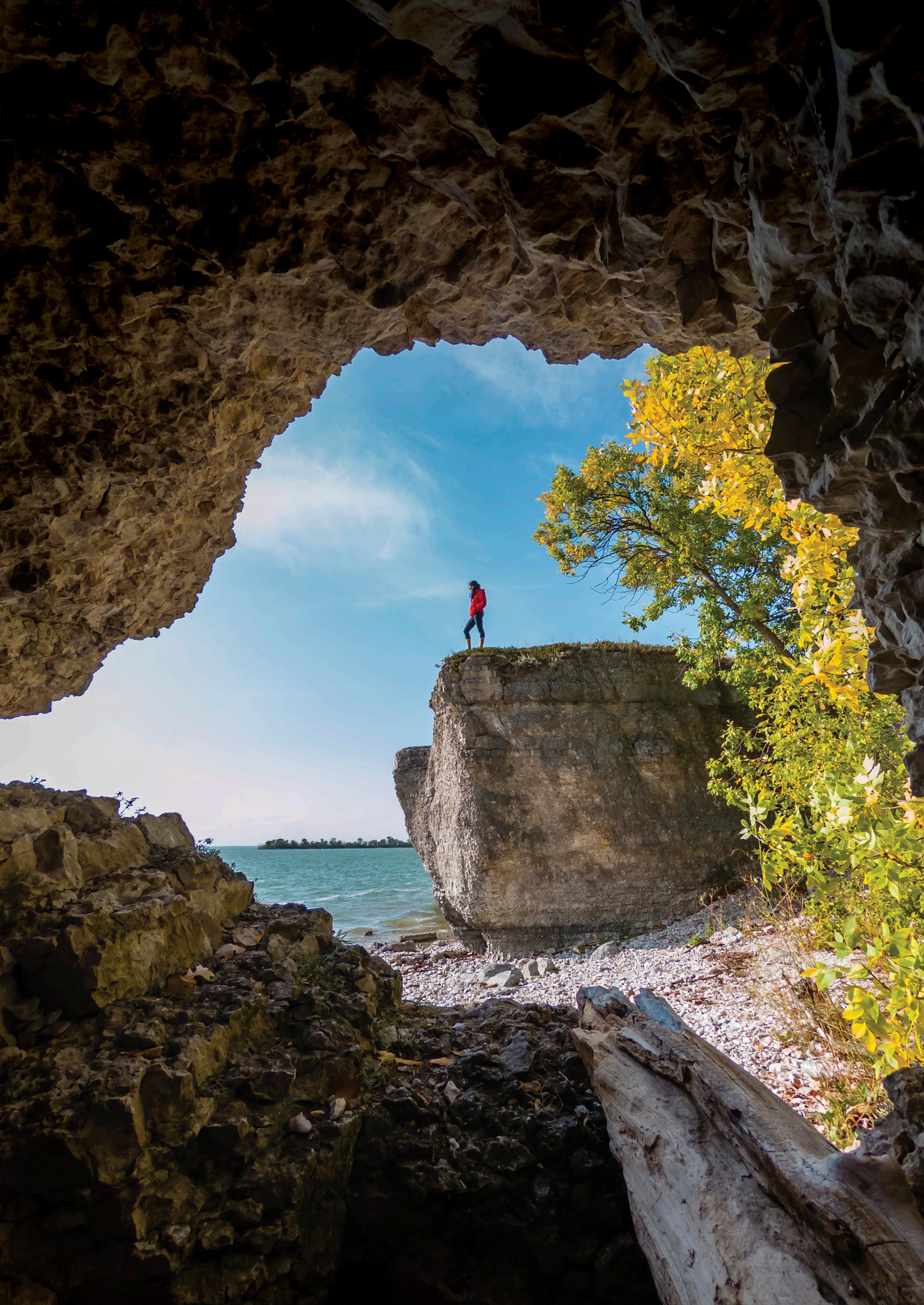
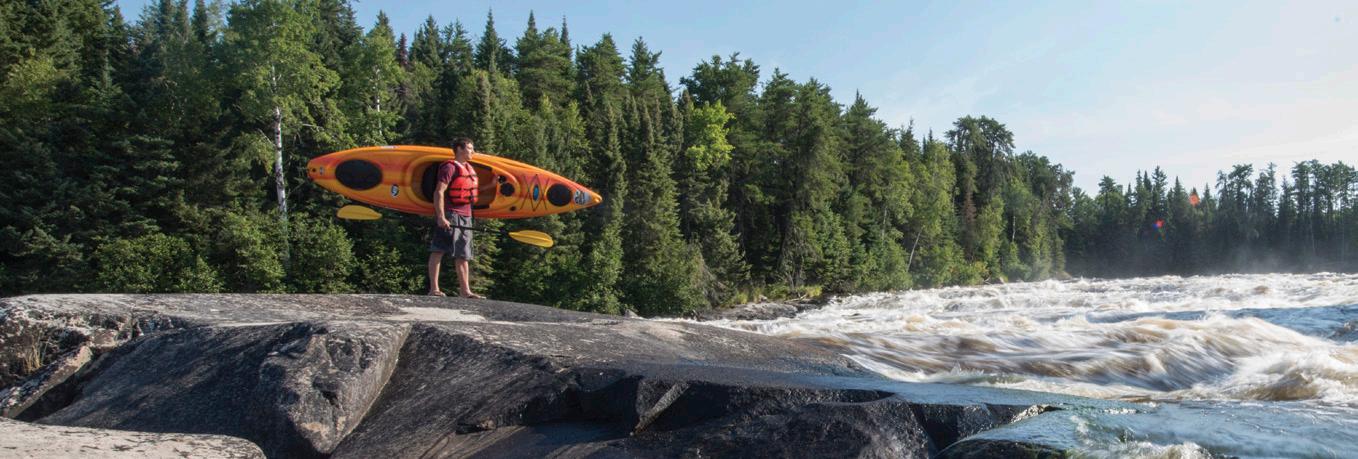




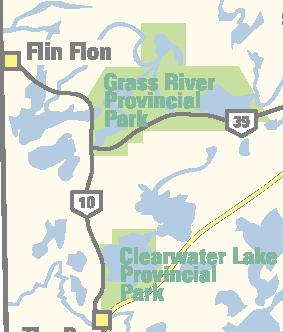
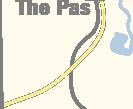





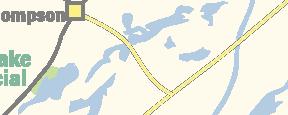
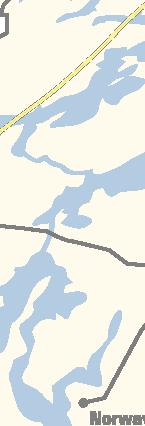
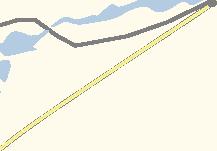
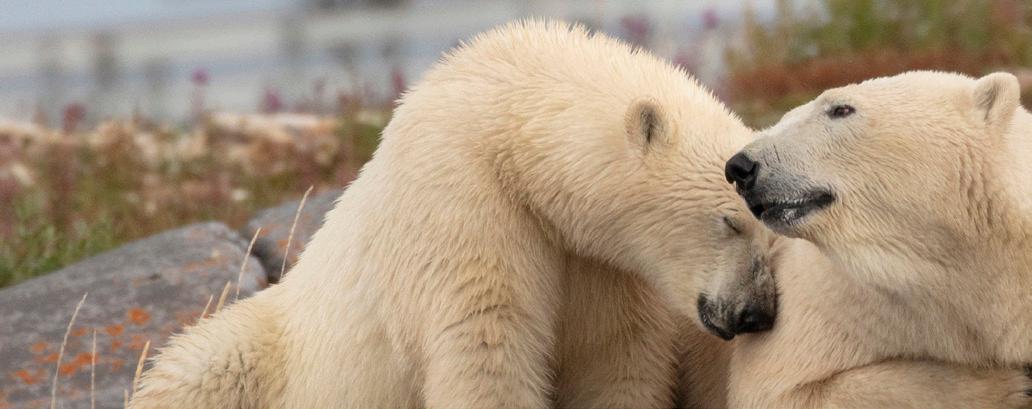
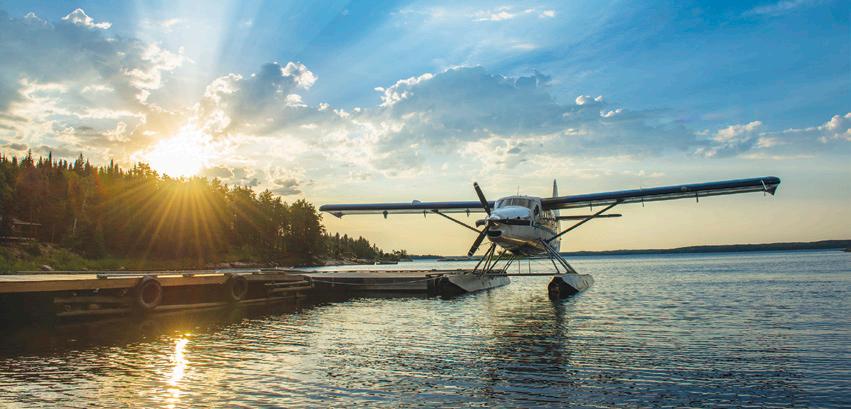
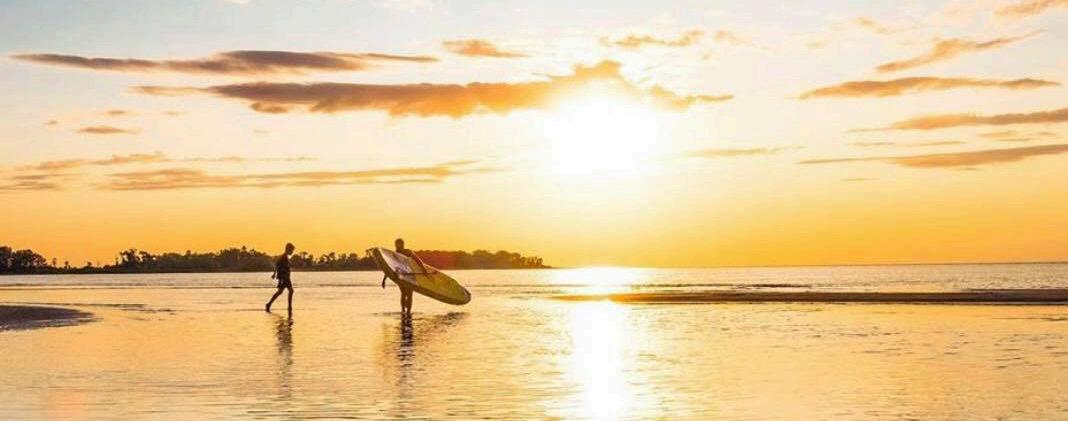

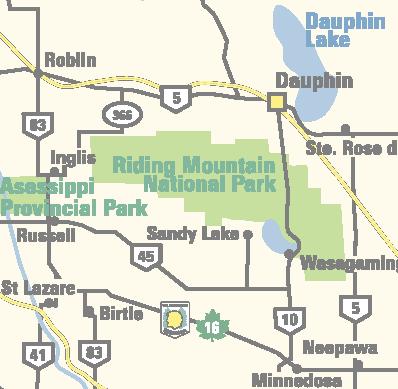
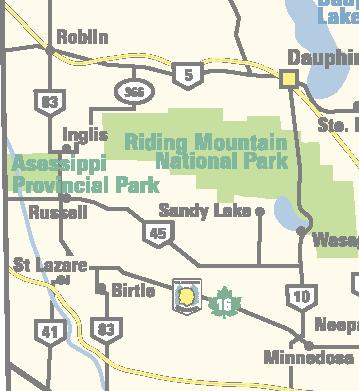
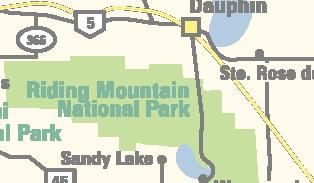

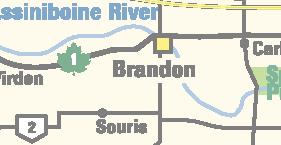
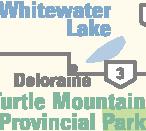
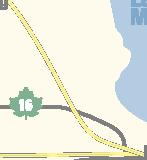

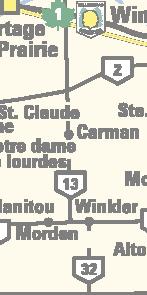
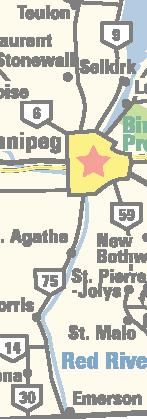
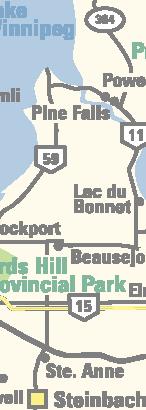
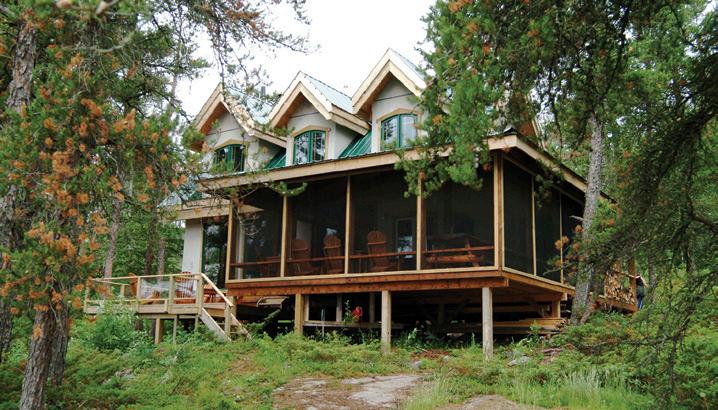
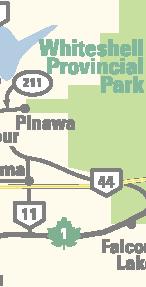
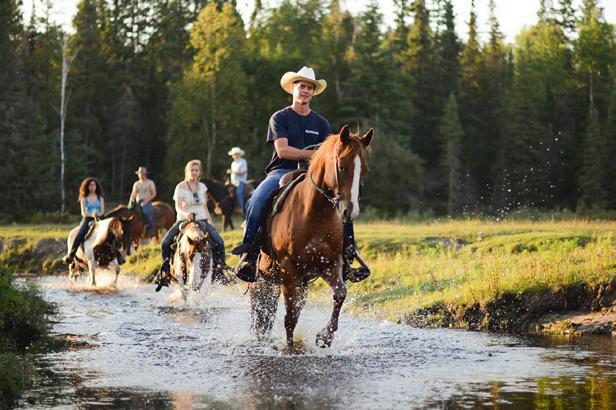
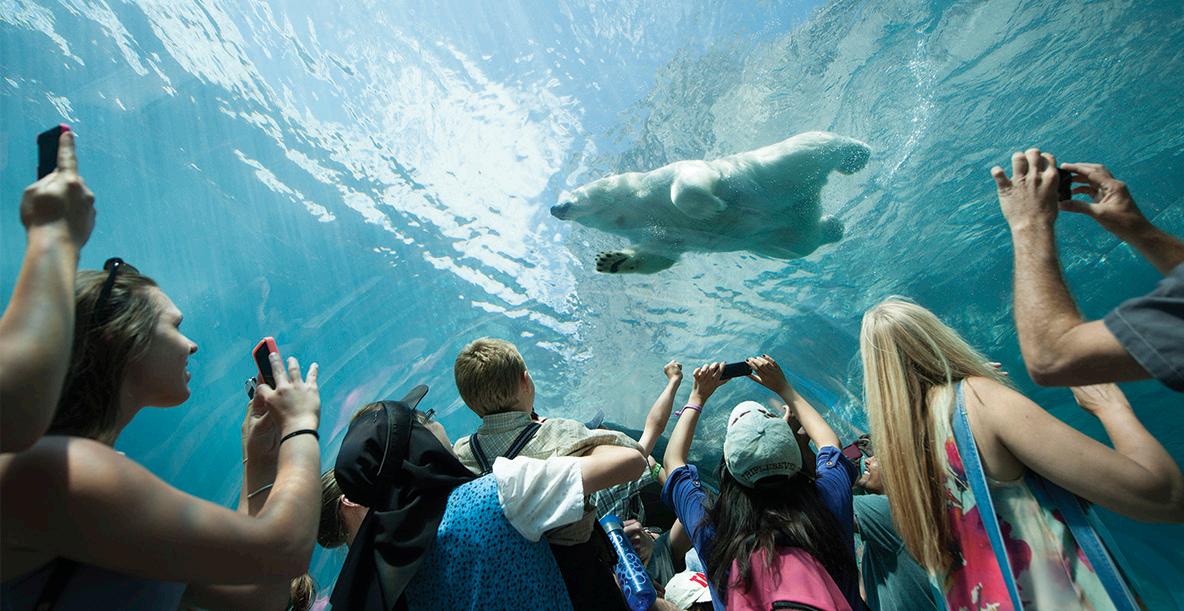
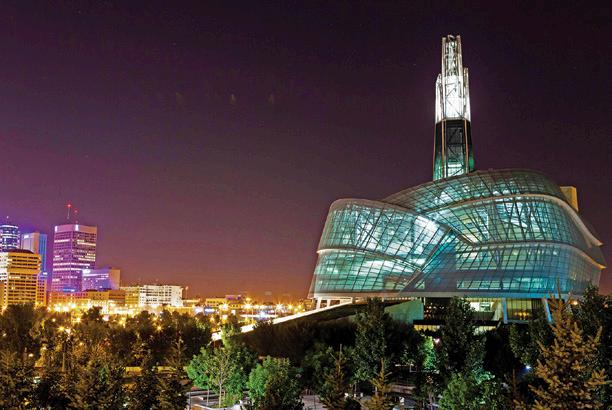





































The experiences are wild, breathtaking and limitless...Manitoba offers surprising opportunities for visitors looking for adventure and to get off the beaten track.
The polar bear capital of the world! There is no better place to watch polar bears, beluga whales and northern lights than in Churchill on the coast of Hudson Bay in the far north of Manitoba.
The pristine wilderness of the North, with its crystal clear lakes and rushing waterfalls, is a perfect place for travellers seeking Canadian solitude.
The 10th largest freshwater lake in the world, Lake Winnipeg inspires with its lighthouses, fishing docks and beautiful sandy beachesperfect for a quick getaway from city life.
Rising from the flat prairie landscape surrounding it, the park’s diverse habitats provide a fantastic opportunity to see wildlife, including the resident bison herd!
The Canadian shield! The picturesque forests, rocky outcroppings and hundreds of lakes are perfect for all kinds of outdoor activities.
Winnipeg sets trends! As a hip multicultural city, the capital of Manitoba inspires with diversity, creativity and a trendy culinary scene.
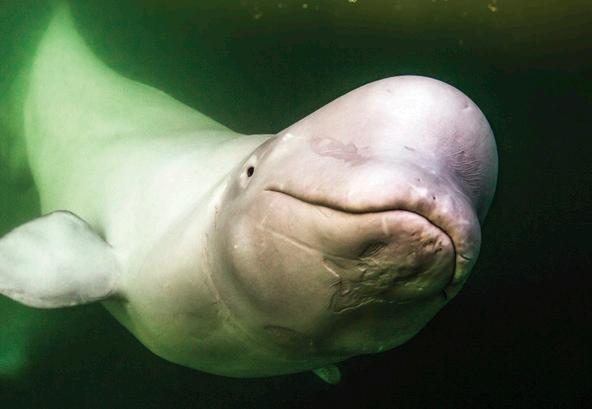
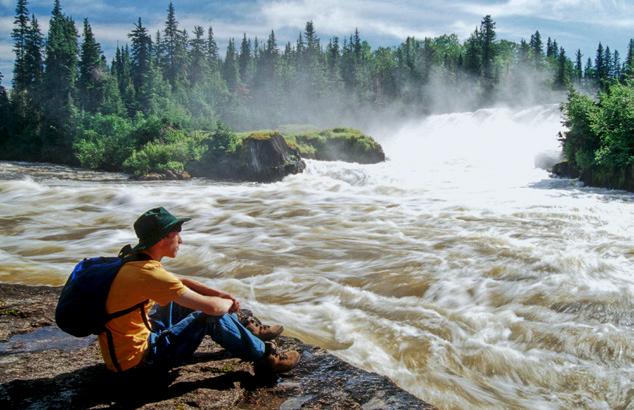

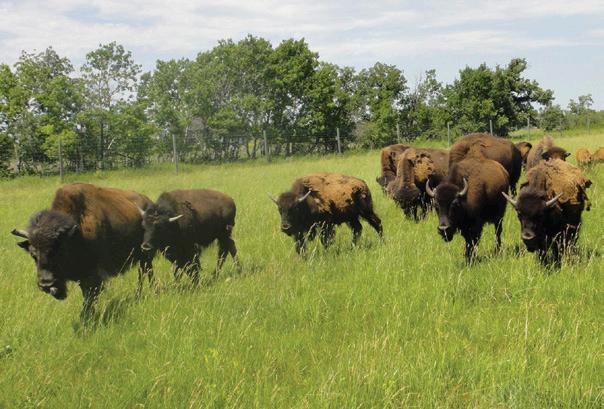
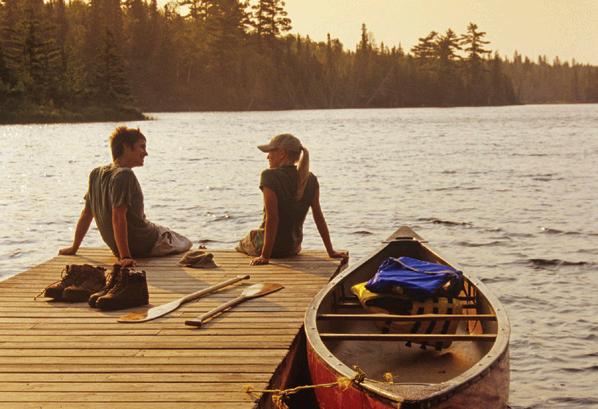
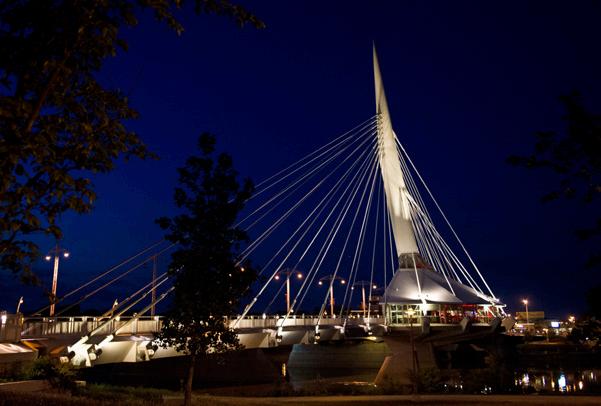
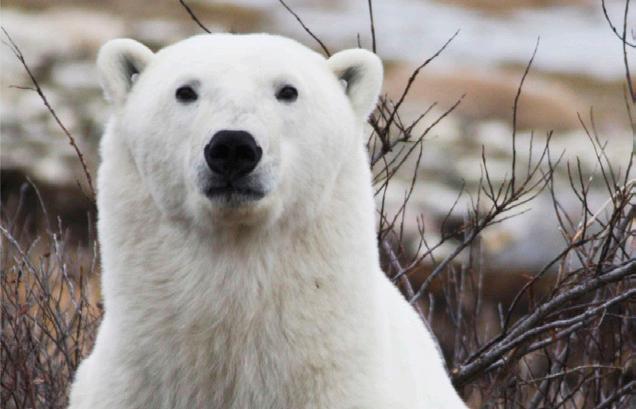
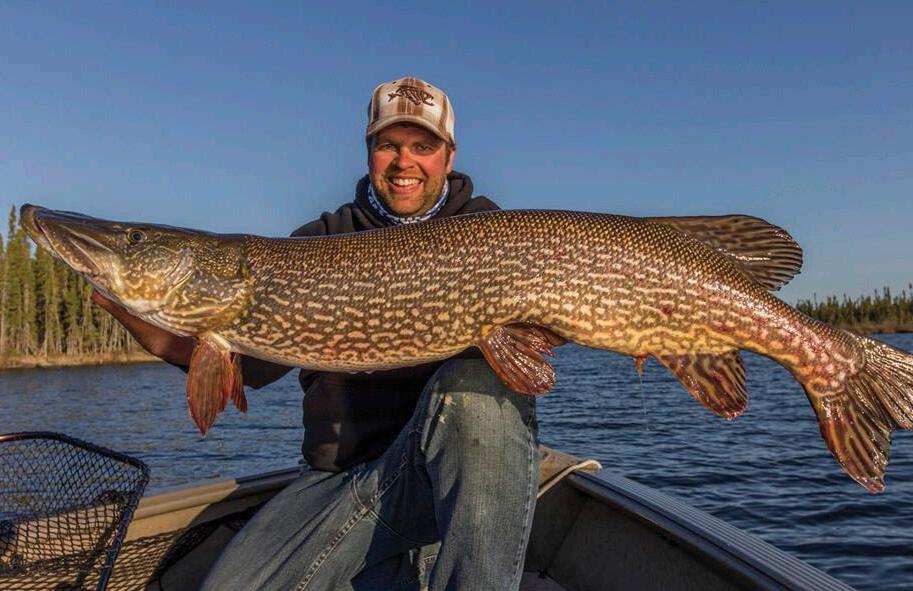
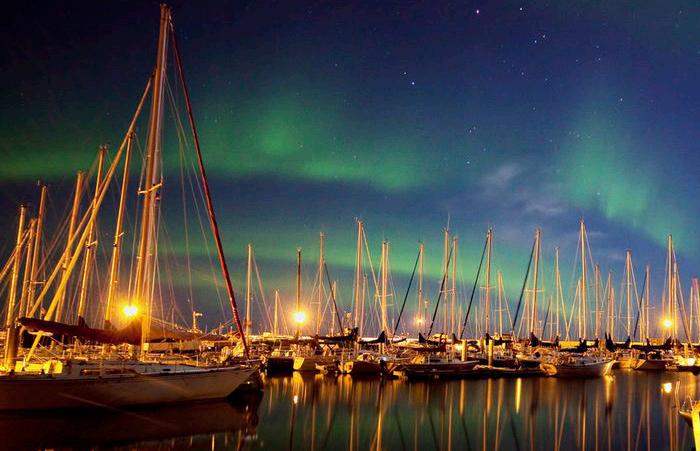
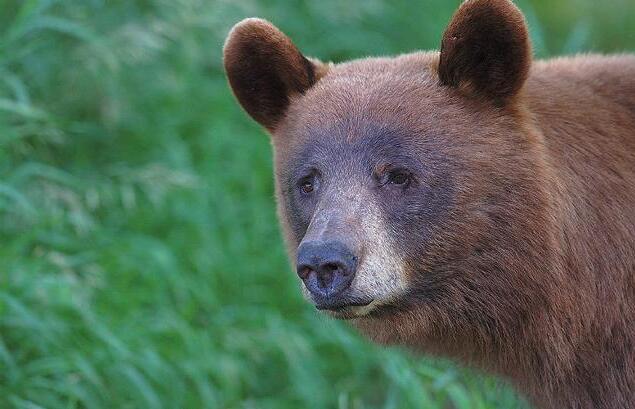
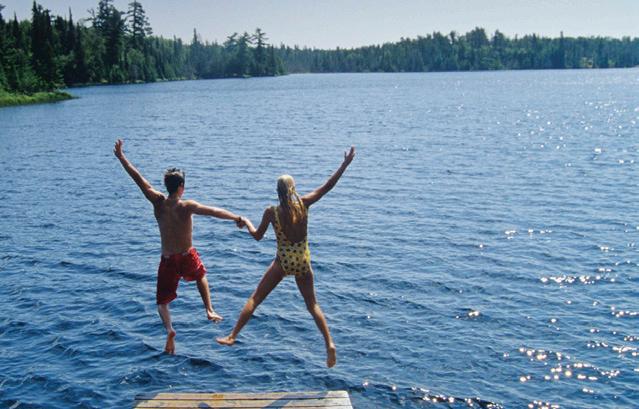

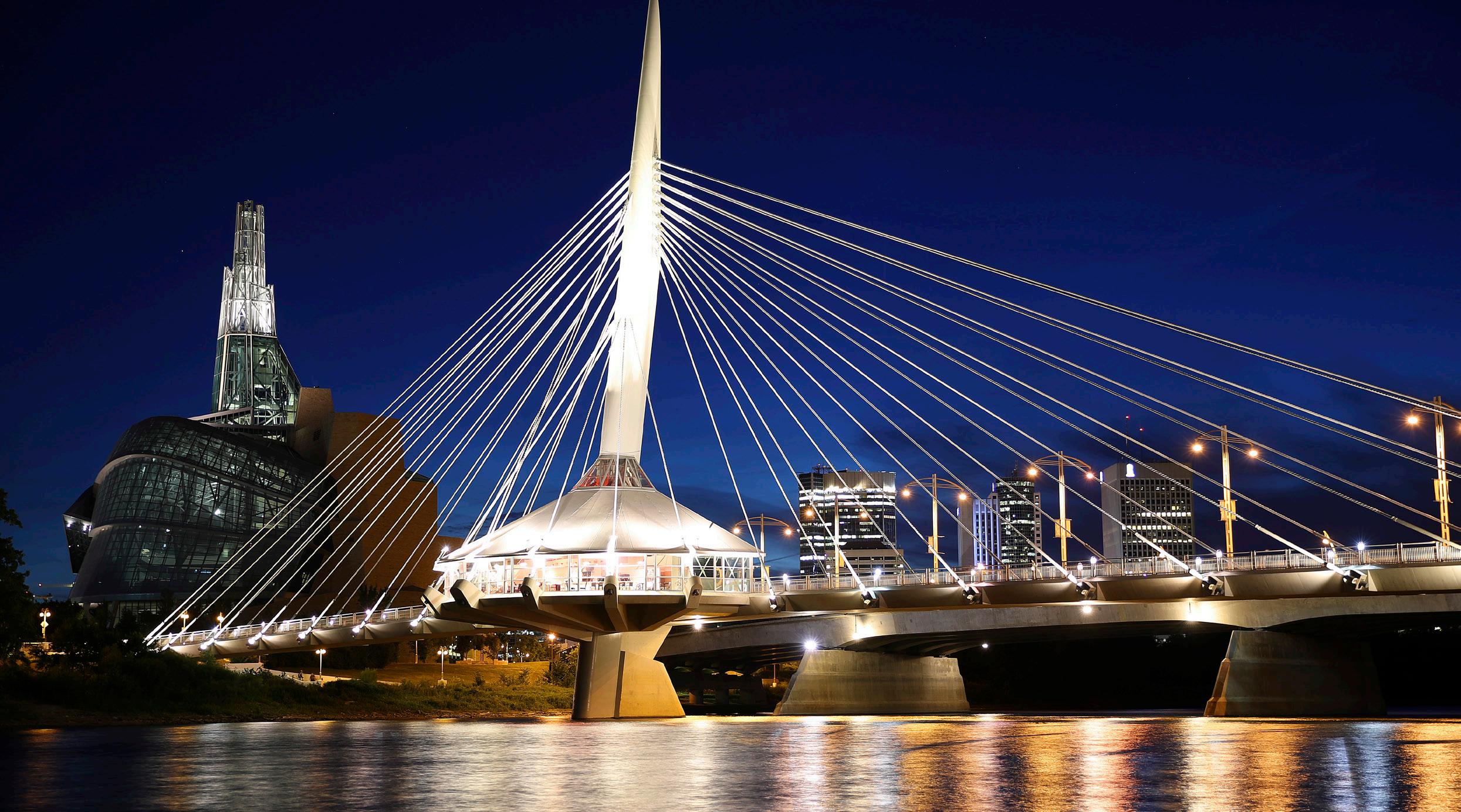
Winnipeg, Manitoba’s provincial capital, is a perfect blend of urban metropolis, lively charm and proximity to endless nature. The city’s neigbourhoods offer an exciting mix of architecture, shopping, cultural experiences and culinary surprises. With a population of 780,000, Winnipeg is home to diverse communities. Numerous festivals, pow wows, art exhibitions and music events offer countless opportunities for urban explorers.
www.tourismwinnipeg.com
With its distinct architecture, the Canadian Museum for Human Rights is an icon defining Winnipeg’s skyline. As Canada’s first national museum outside the capital of Ottawa, the Canadian Museum for Human Rights uses thought-provoking, interactive exhibits to highlight different perspectives of human rights. www.humanrights.ca
Experience Manitoba’s North without leaving the city at the Journey to Churchill exhibit in the Assiniboine Park Zoo. This exhibit offers a sneak peek of what you could expect to see in Churchill (including polar bears!). The Leatherdale International Polar Bear Conservation Centre offers insight on current polar bear research. www.assiniboinepark.ca
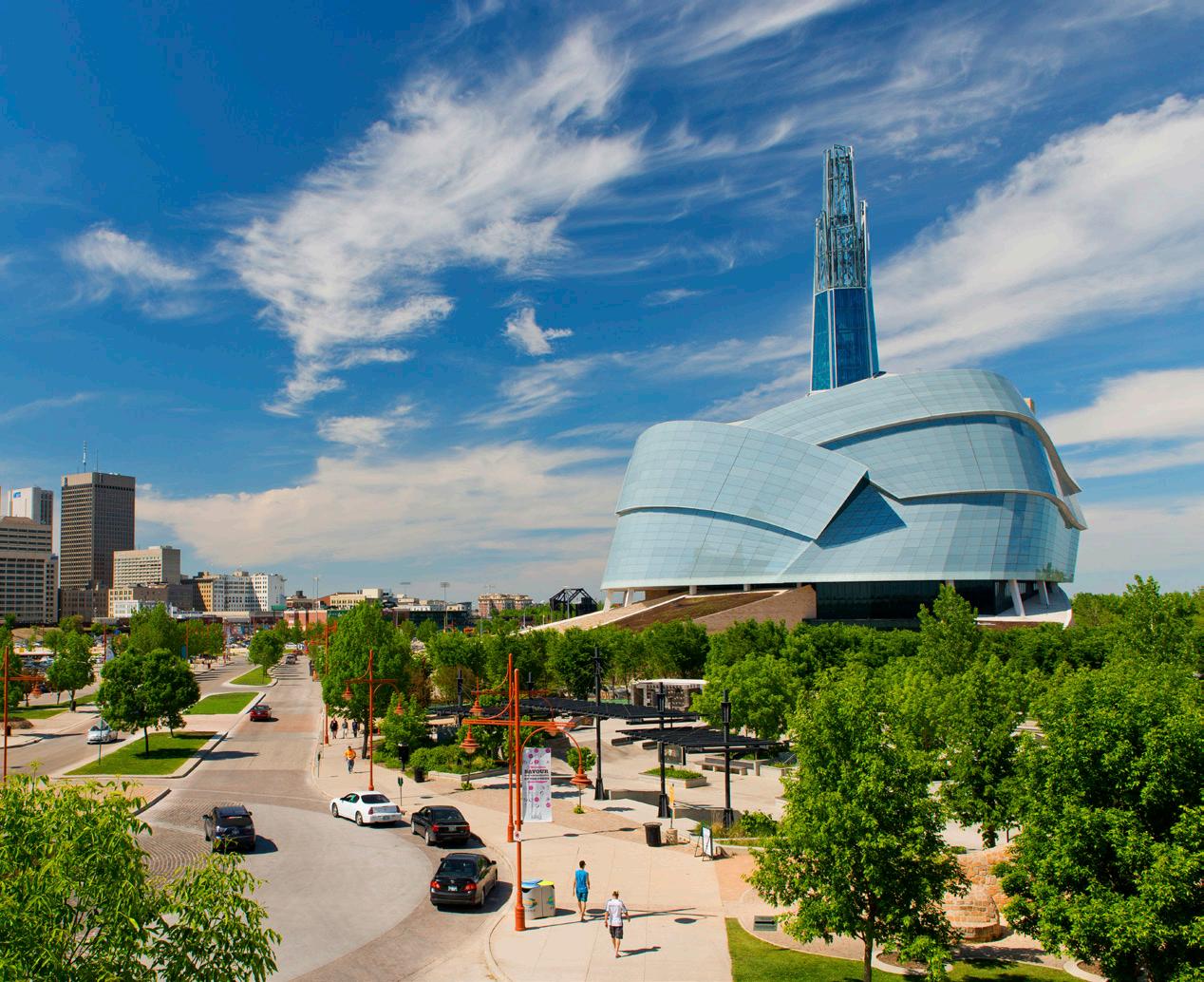
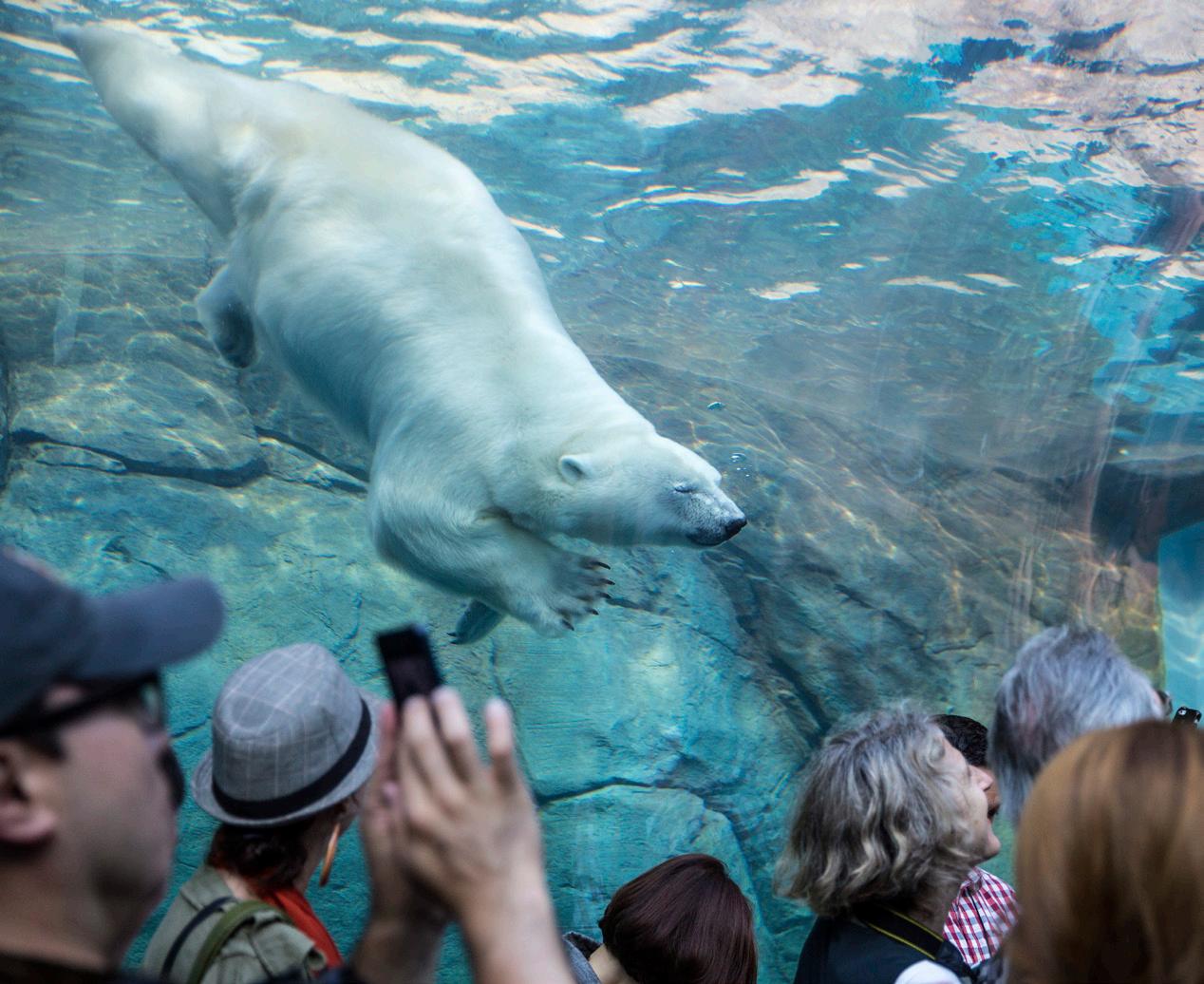
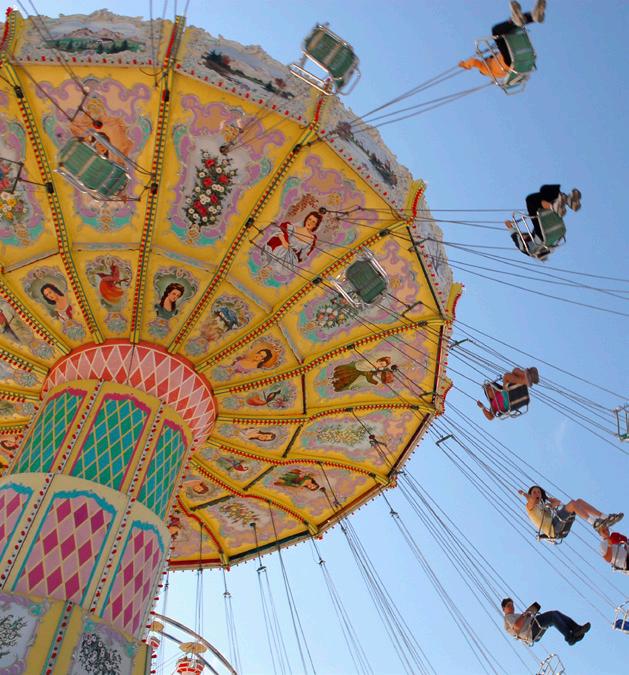


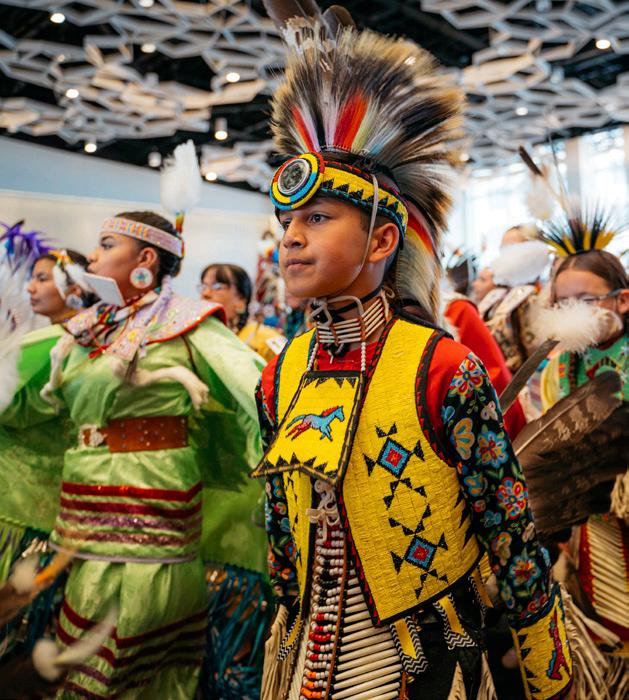
The Forks
Renovated railway warehouses and stables now house a marketplace complete with a bar, restaurants and shops. This national historic site is a trendy meeting place. www.theforks.com
Exchange District
This historic district preserves the city’s early 20th century commercial centre. Its heritage streetscapes are often used as the backdrop for international film productions and the district is now one of the city’s cultural hotspots. www.exchangedistrict.org
St. Boniface
The French quarter of Winnipeg is one of the largest Francophone communities in Canada outside of the province of Québec. www.tourismeriel.com
Lower Fort Garry
Bringing to life the time of the fur trade, this open-air museum on the Red River was also the first training facility for the North West Mounted Police. www.pc.gc.ca/fortgarry

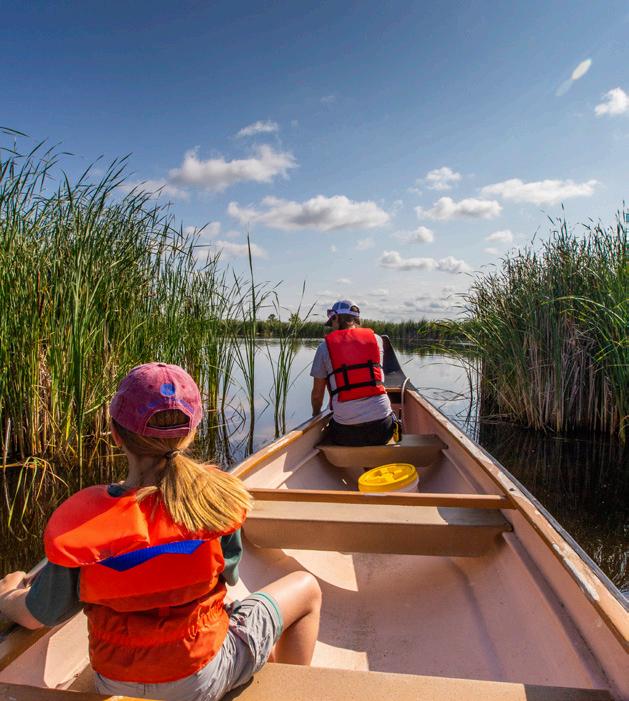
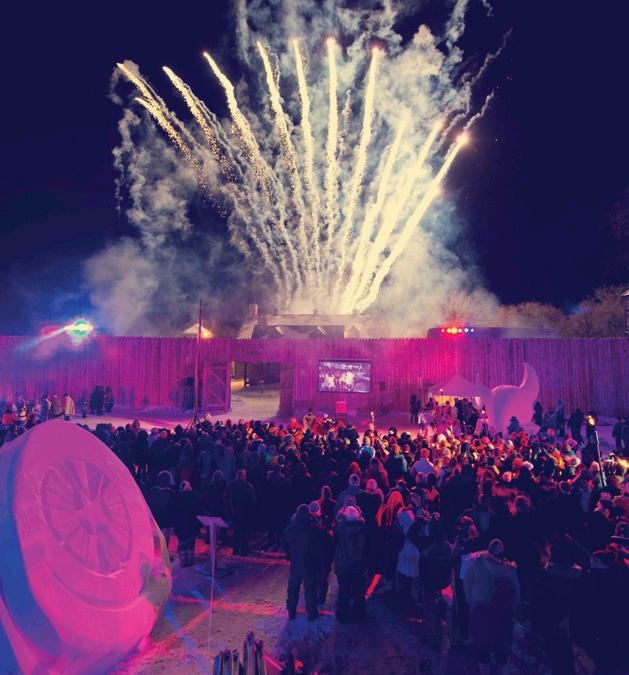

Hermetic Code Tour
Unlock the mysteries and hidden symbolism of the Manitoba Legislative Building. www.heartlandtravel.ca
The Manitoba Museum
With a focus on people and nature, the museum takes you on a journey through millions of years across Manitoba’s vast and varied landscapes. www.manitobamuseum.ca
WAG Inuit Art Centre
In late 2020, the Winnipeg Art Gallery will open the doors to the world’s largest public collection of contemporary and traditional Inuit art. www.inuit.wag.ca
Fort Whyte Alive
A bison safari in the middle of the big city. www.fortwhyte.org
Oak Hammock Marsh
This popular bird sanctuary is located in the middle of a marshland 30 minutes north of Winnipeg.
www.oakhammockmarsh.ca
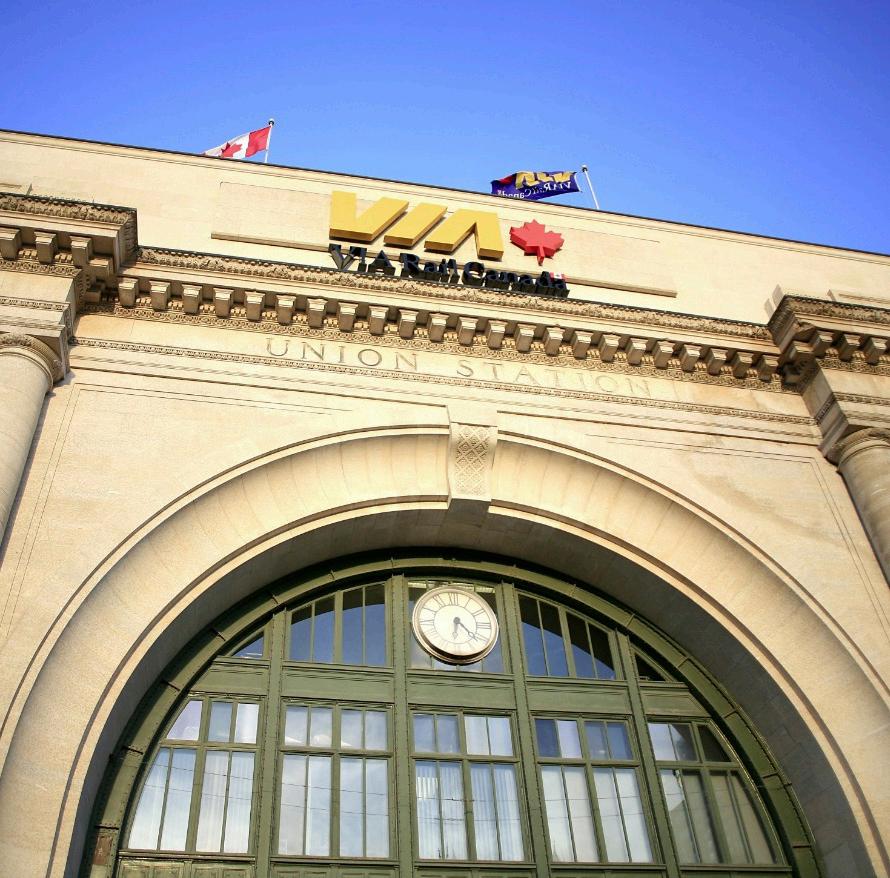
Travellers crossing the country aboard The Canadian operated by VIA Rail can pause their train journey between Toronto and Vancouver free of charge. This provides a perfect opportunity to extend the four-day, 4,500 km journey and get to know Manitoba’s provincial capital, Winnipeg! www.viarail.ca

If you’re looking for adventure away from the well known holiday regions of Canada, Manitoba is the place for you! The accessible parks in the southern part of the province can be easily explored by rental car or RV. Nature lovers will find plenty of opportunities for a wide range of outdoor activities, with many featuring the province’s abundance of water. Hit the beaches or relax on the dock. Dip in a paddle or take a boat tour. Plus, explore thousands of kilometres of hiking trails that crisscross through the parks.
Riding Mountain National Park rises above the surrounding prairie, sitting atop the Manitoba Escarpment in the province’s southwest. This national park offers perfect terrain for hiking, not to mention ways to relax beside the picturesque Clear Lake. The park offers ideal conditions for wildlife viewing. In addition to moose, wolves, black bears and elk, there is also a resident herd of prairie bison. Don’t forget your camera! www.parkscanada.gc.ca/riding
Spruce Woods Provincial Park is a real geological surprise. Wind-blown sand dunes up to 30 metres high rise up completely unexpectedly from the surrounding prairie landscape. The Spirit Sands, remnants of a glacial delta, are Manitoba’s only sandy, desert-like area. www.manitobaparks.com

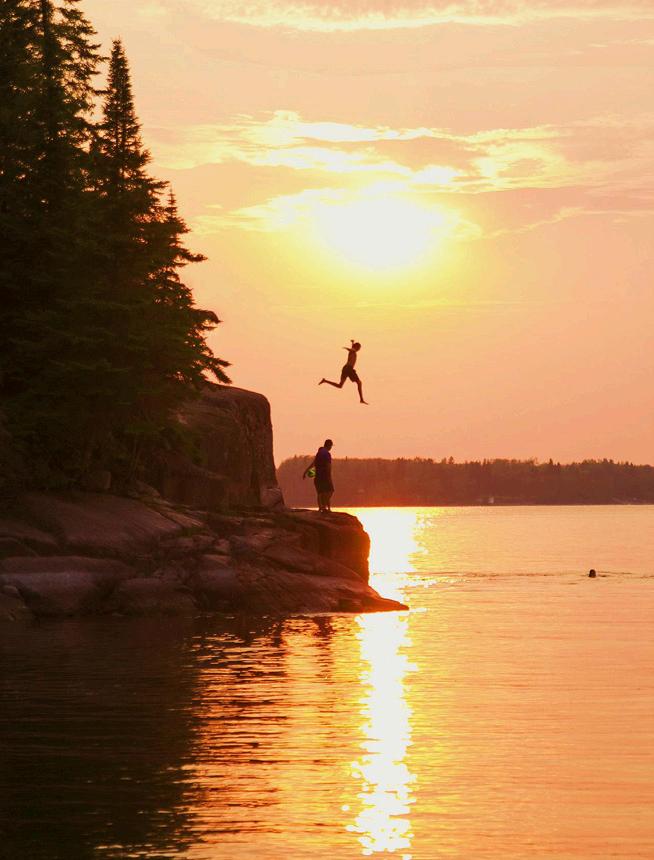
Whiteshell Provincial Park is located on the eastern side of the province of Manitoba. The main focus in this area is the Canadian cabin lifestyle. The lakes welcome visitors for various water activities such as canoeing, kayaking, swimming, water skiing and fishing. Explore the park’s trails on a hike, bike tour or horse ride. www.explorethewhiteshell.com
Nopiming Provincial Park lies next to Whiteshell Provincial Park. The Anishinaabe word Nopiming means “entrance to the wilderness”, a fitting name indeed. With its many lakes and rivers and the Canadian shield landscape, it is a true paradise for adventurers. www.manitobaparks.com
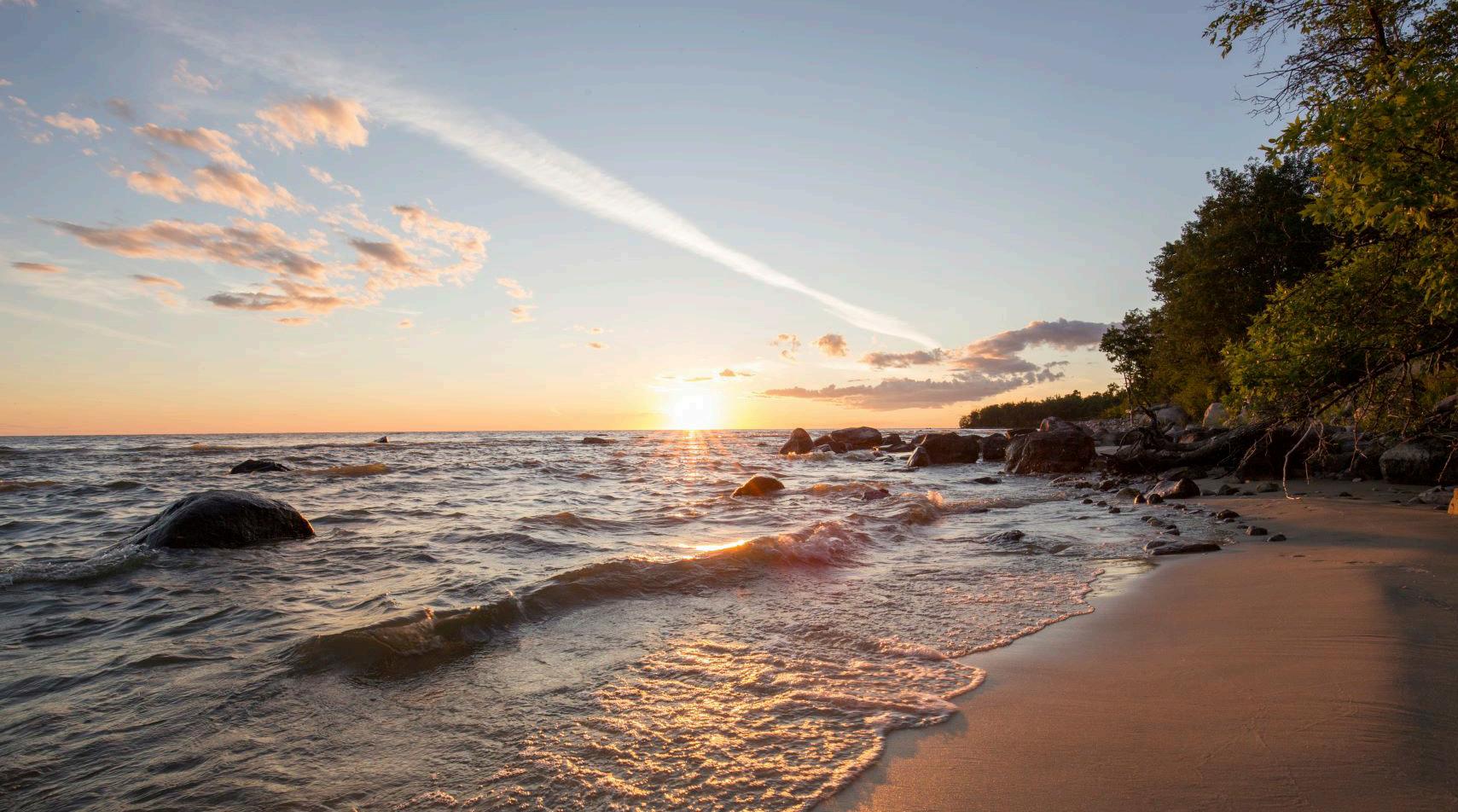
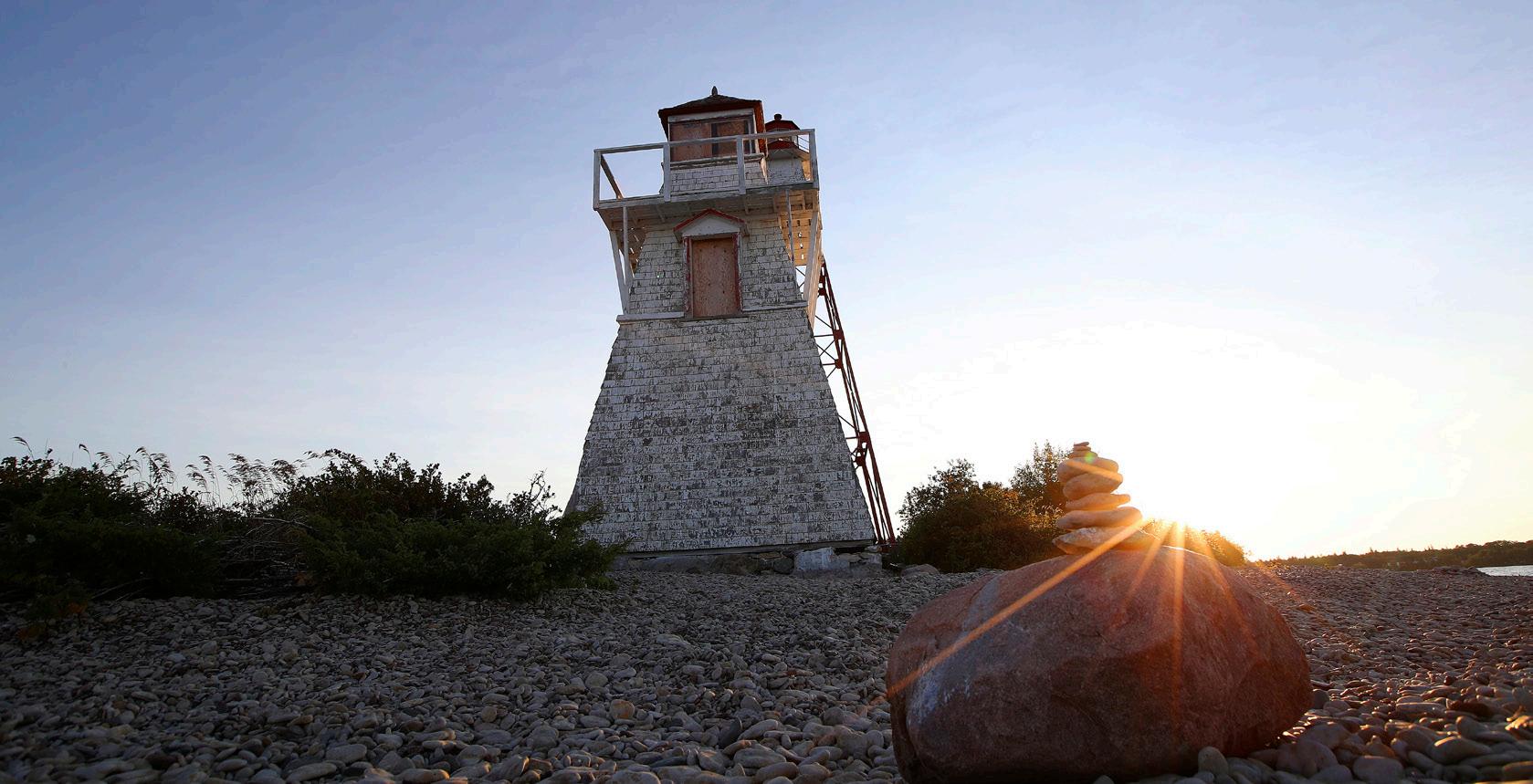
Far away from all the oceans, there is a place in the middle of the prairie where you hear stories about sunken ships and magical islands, where for generations the waters were a way of life.
Lake Winnipeg is Manitoba’s largest lake and the 10th largest freshwater lake in the world. It projects a maritime atmosphere with its cozy coastal villages where fishing was the way of life and long white sandy beaches with excellent options for water sports.
Hecla Grindstone Provincial Park on the western shore of Lake Winnipeg is a rugged island with picturesque limestone shorelines. It was once the home of a small Icelandic community, whose cultural heritage can still be seen in many places on the island. The diverse landscapes of the provincial park are home to numerous animal species, including a large colony of pelicans. Enjoy the show when the mighty wings of these majestic birds power them up into the air! www.heclatourism.mb.ca
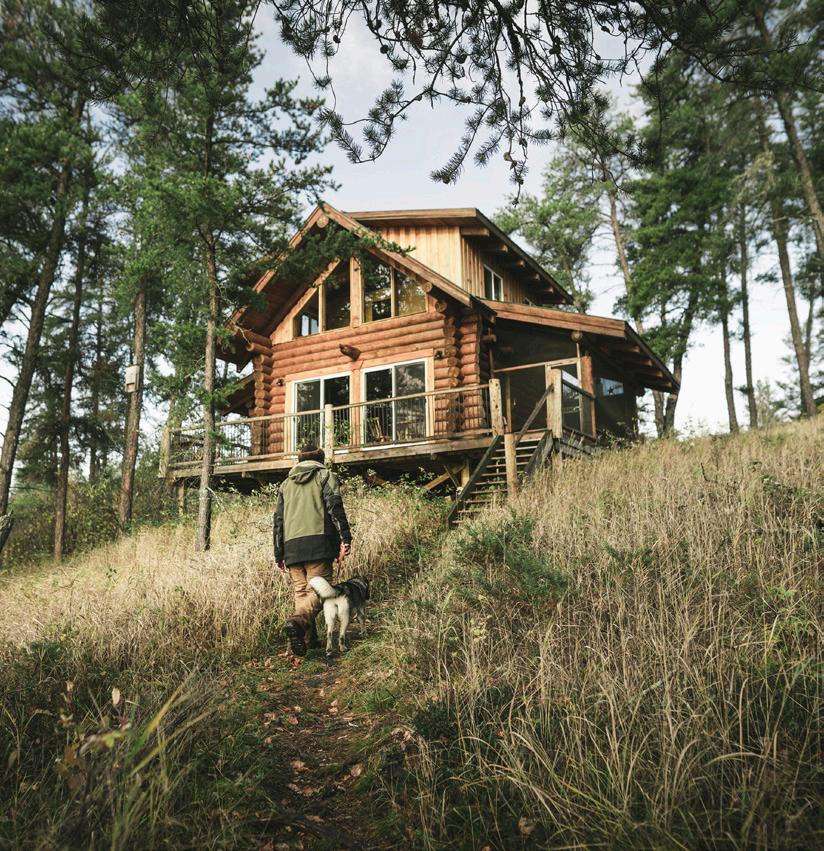
Why not rent your own log cabin on one of Manitoba’s lakes and experience “the Canadian way of life”? Start the day with a dip in the refreshing water. From the dock, watch the canoes float by or maybe grab a paddle yourself. Cast a line and catch fish for dinner. Peace, relaxation and being able to unwind – a real Canadian dream!
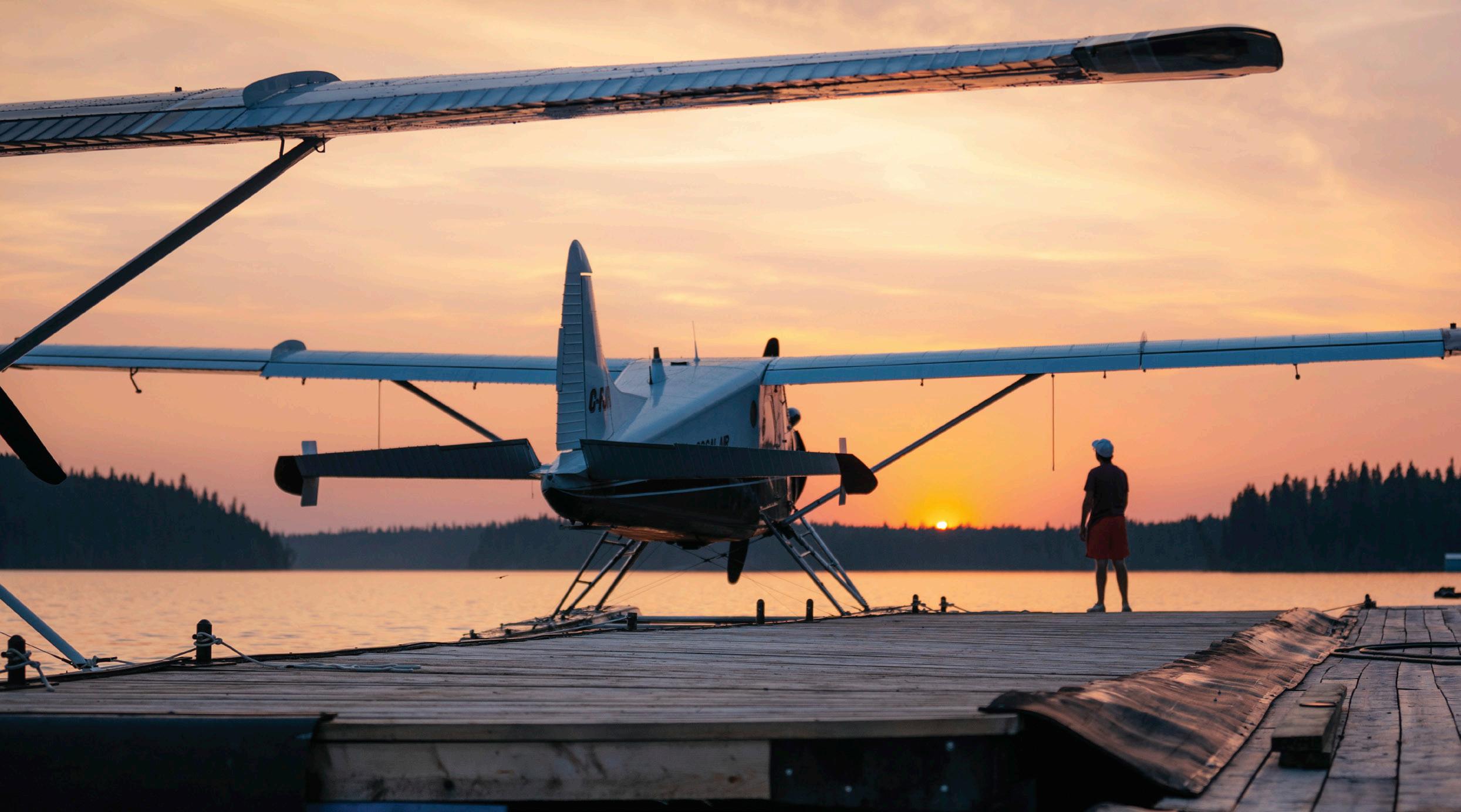
Manitoba’s North is a paradise for those who are looking for “Canadian solitude” and want to avoid crowds of tourists. Isolated wilderness shapes the scenery. With its huge areas of boreal forest as well as countless lakes and rivers, the landscape merges into the subpolar tundra. Motorhome travellers will find scenic campsites in provincial parks, but rental car tours should be planned in advance, due to the limited choice of accommodations. A definite highlight is a night in a remote fly-in lodge that can only be reached by floatplane. Anglers will find they get their money’s worth here.
Crystal clear blue water as far as the eye can see – anyone who loves this hue, will love Clearwater Lake! It is located northeast of The Pas in Clearwater Lake Provincial Park. As the name suggests, the lake’s water is extremely clear – it is said to be one of the clearest lakes in the world!
A hike along Flinty’s Boardwalk and Trail offers a phenomenal view of the city of Flin Flon on Manitoba’s border with Saskatchewan. Over four kilometers of trail takes you to the top of the volcanic rocks that surround Ross Lake.
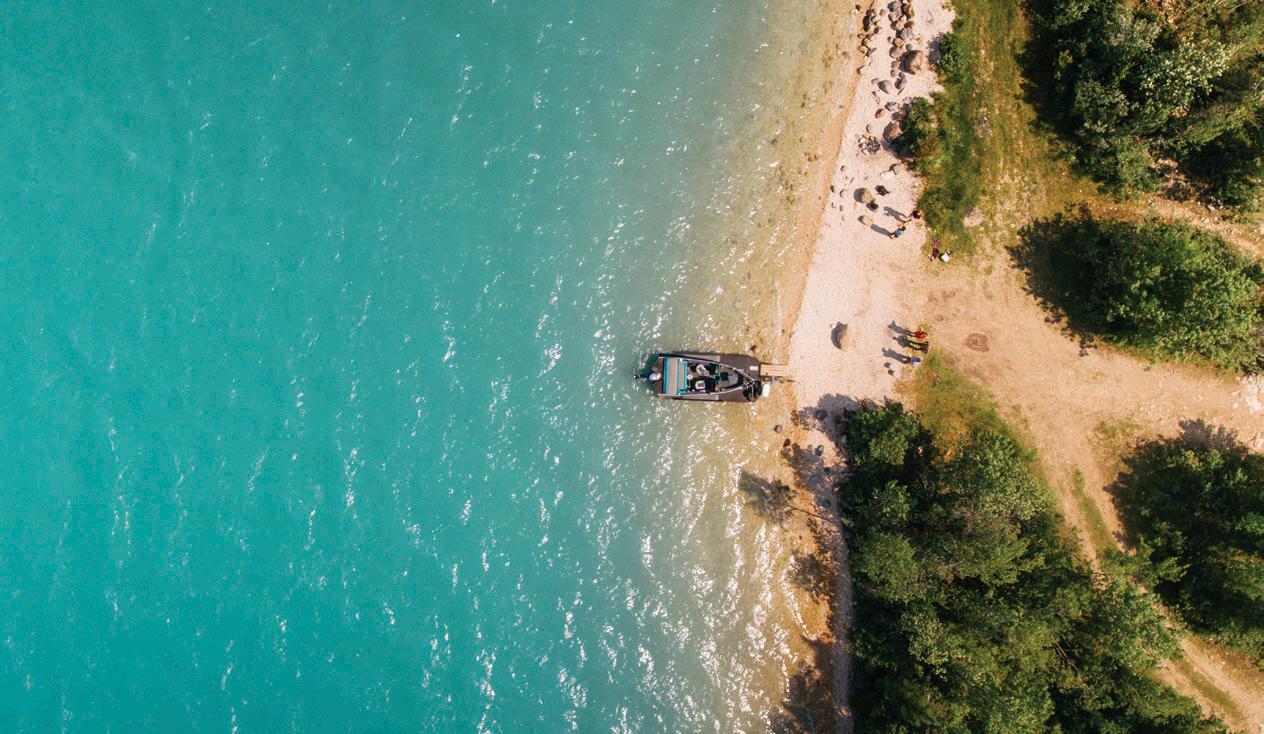
Little Limestone Lake is also a true gem. Located at the northern tip of Lake Winnipeg, this lake is considered to be the largest and best example of a marl lake anywhere in the world. Calcite deposits in the water react with warming temperatures changing the lake’s colour from a robin’s egg blue to a dazzling turquoise.
A giant wolf keeps watch over the northern city of Thompson, known as the gateway to the North. The 10 storey wolf mural is part of Spirit Way, a two-kilometre self-guided trail with 16 points of interest that focus on Thompson’s heritage, art, industry, geology and landscape.
A dazzling stop along the way to the North is the Caribbeanesque atmosphere at Steep Rock on the eastern shore of Lake Manitoba! Here the water is turquoise blue, the beaches are covered with fine sand and a backdrop of limestone cliffs punctuates the landscape. Cold drinks and snacks are offered at a rustic beach hut, and kayaks and canoes are available for rent.
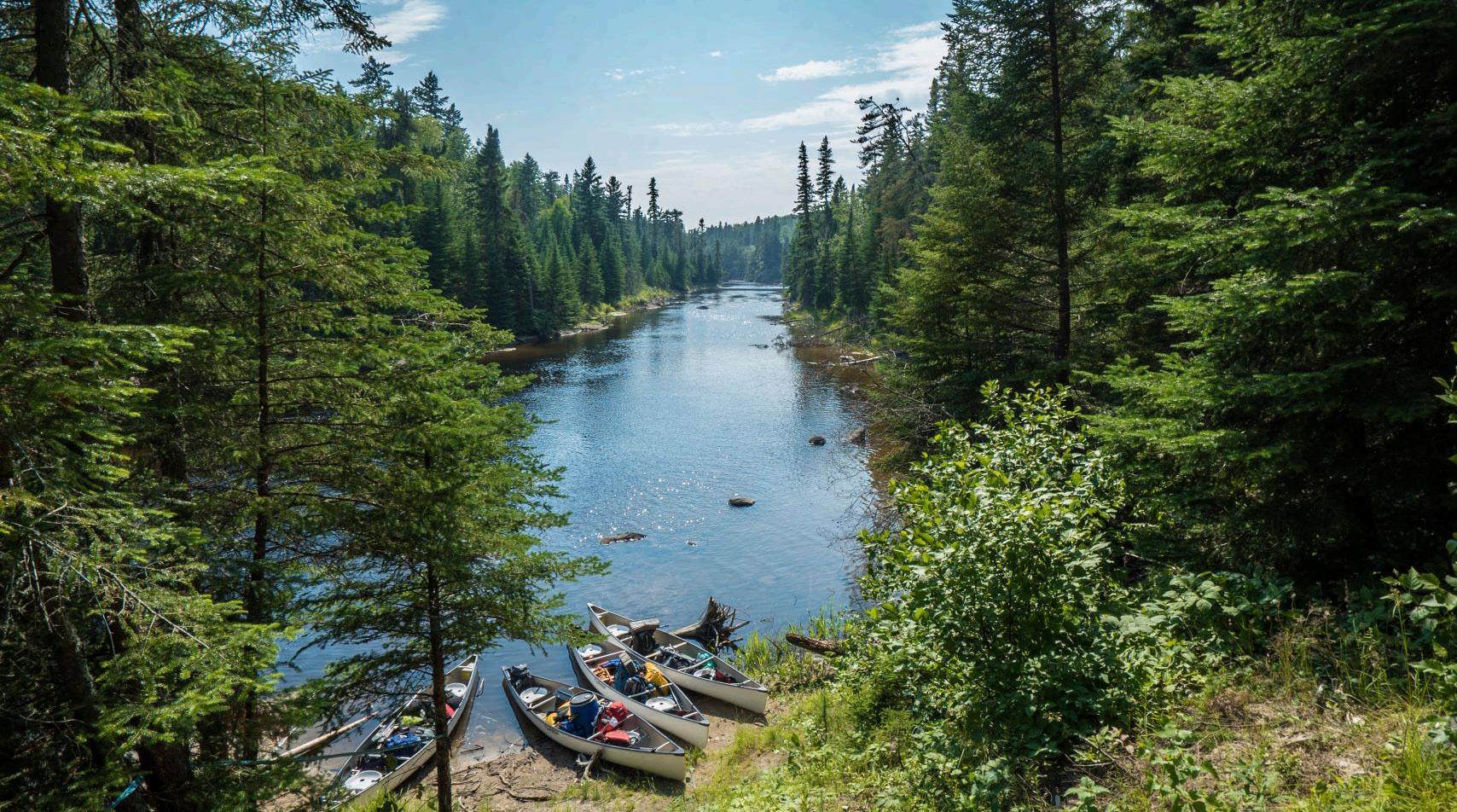
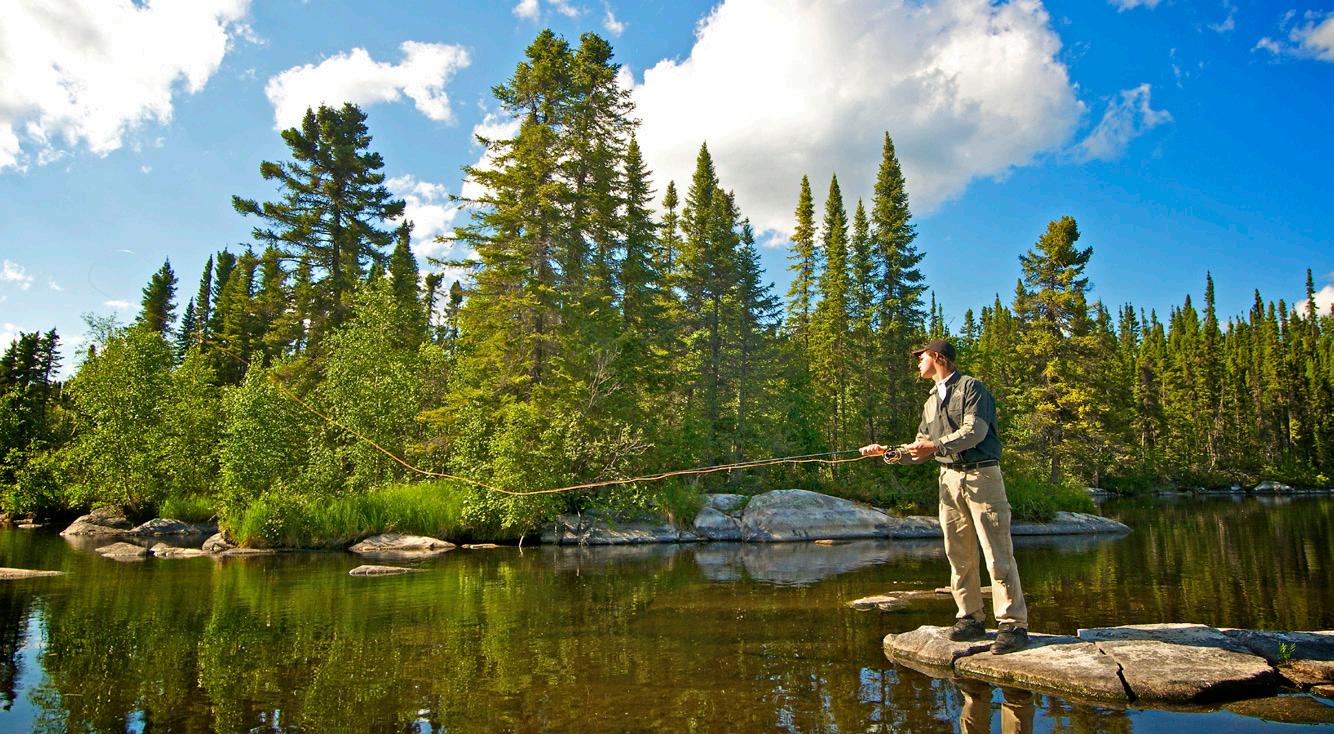
Manitoba was once the center of the fur trade. The region’s waterways made it easy to transport goods between north and south and east and west. Today, these waterways – including four Canadian Heritage Rivers that are important to Canada’s history – offer excellent opportunities for paddling and attract canoeists and kayakers from around the world.
Experienced paddlers appreciate the appeal of the rivers in Northern Manitoba, including the Hayes and Grass River, which – like the Seal River – flow into Hudson Bay. Another favourite paddling destination is the Bloodvein River, located in Pimachiowin Aki, designated a UNESCO World Heritage Site in 2018. Beginner canoeists can embark on guided tours from Winnipeg to southern region destinations such as Whiteshell or Nopiming Provincial Park.

In Manitoba’s forested North, the Grass River winds through the wild landscape. At Wekusko Falls, the river rushes through a series of rapids. Two suspension bridges cross the cascades at different points and offer photographers the perfect perspective. There is a small walk-in tent campsite near the waterfall, which is one of the most beautiful in Manitoba! The river continues to flow through Setting Lake and the Sasagiu Rapids before reaching Manitoba’s most famous – and highest – waterfalls, Pisew and Kwasitchewan Falls. Avid outdoor enthusiasts can embark on the 22-kilometre round-trip hiking trail that connects the two waterfalls. You can also simply enjoy the great view of Pisew Falls from the accessible lookout point near the parking lot.
On the edge of the Arctic
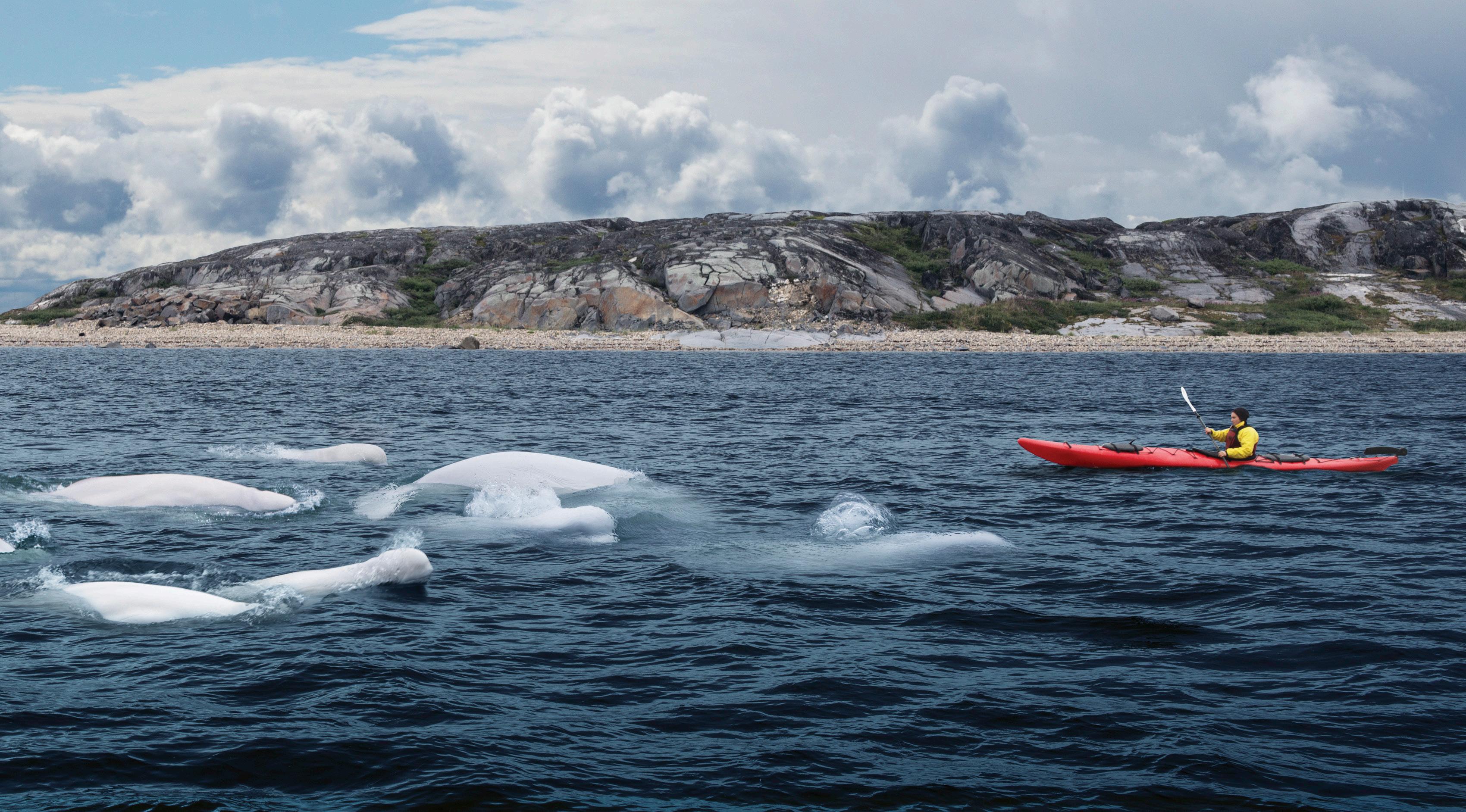
Churchill is remote even by Canadian standards. This frontier town stands on the banks of Hudson Bay in northern Manitoba, around 1,000 kilometers from Winnipeg. Churchill can only be reached by plane or train – there are no roads to this small community. The town consists of a handful of streets with weathered wooden houses, two churches, the “Polar Bear Jail” (a facility that keeps bears and people safe by temporarily holding bears that wander into town before relocating them to the wild.), the Itsanitaq Museum (showcasing a large collection of Inuit art and artifacts), a supermarket along with hotels and restaurants. The town radiates a mixture of charm and mystery that enchants residents and visitors. Those who come here do not want a vacation –they want adventure. www.everythingchurchill.com
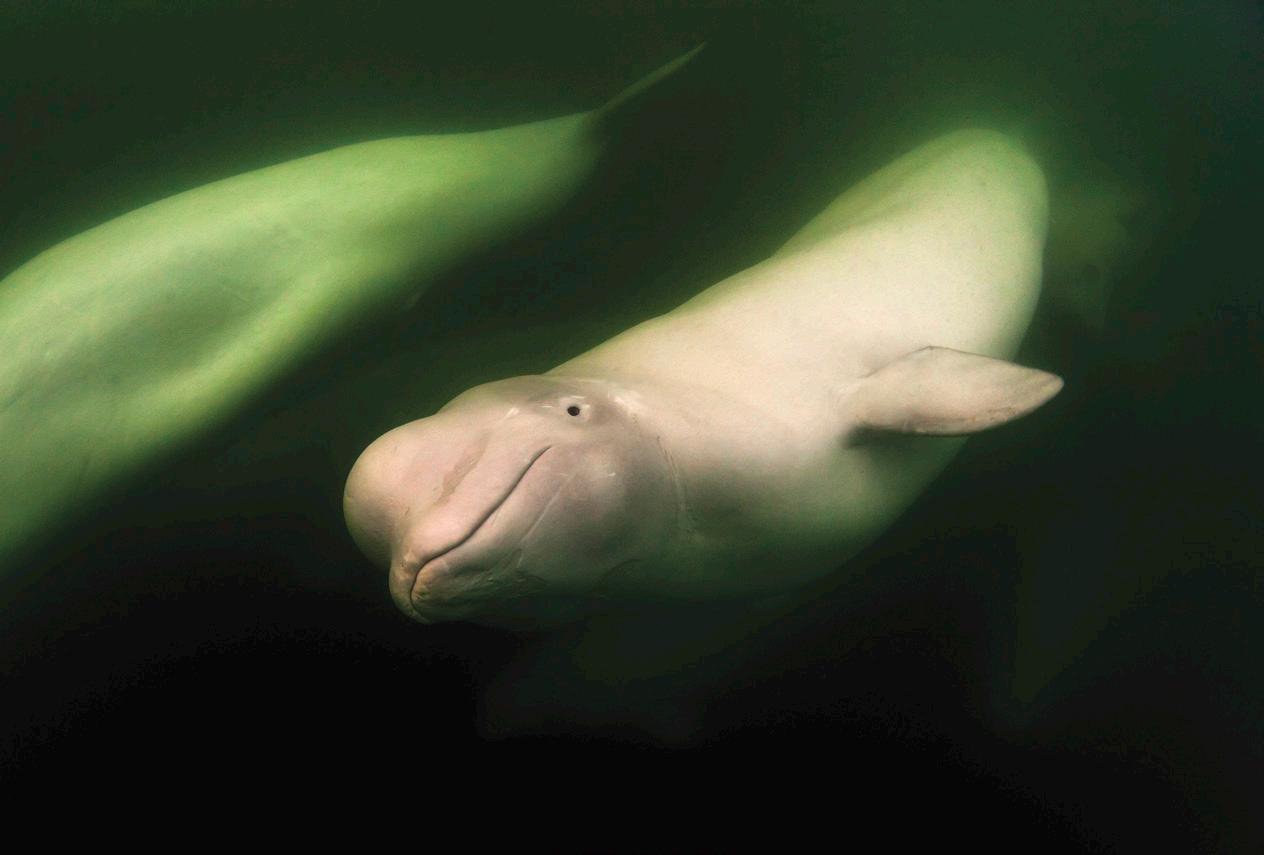
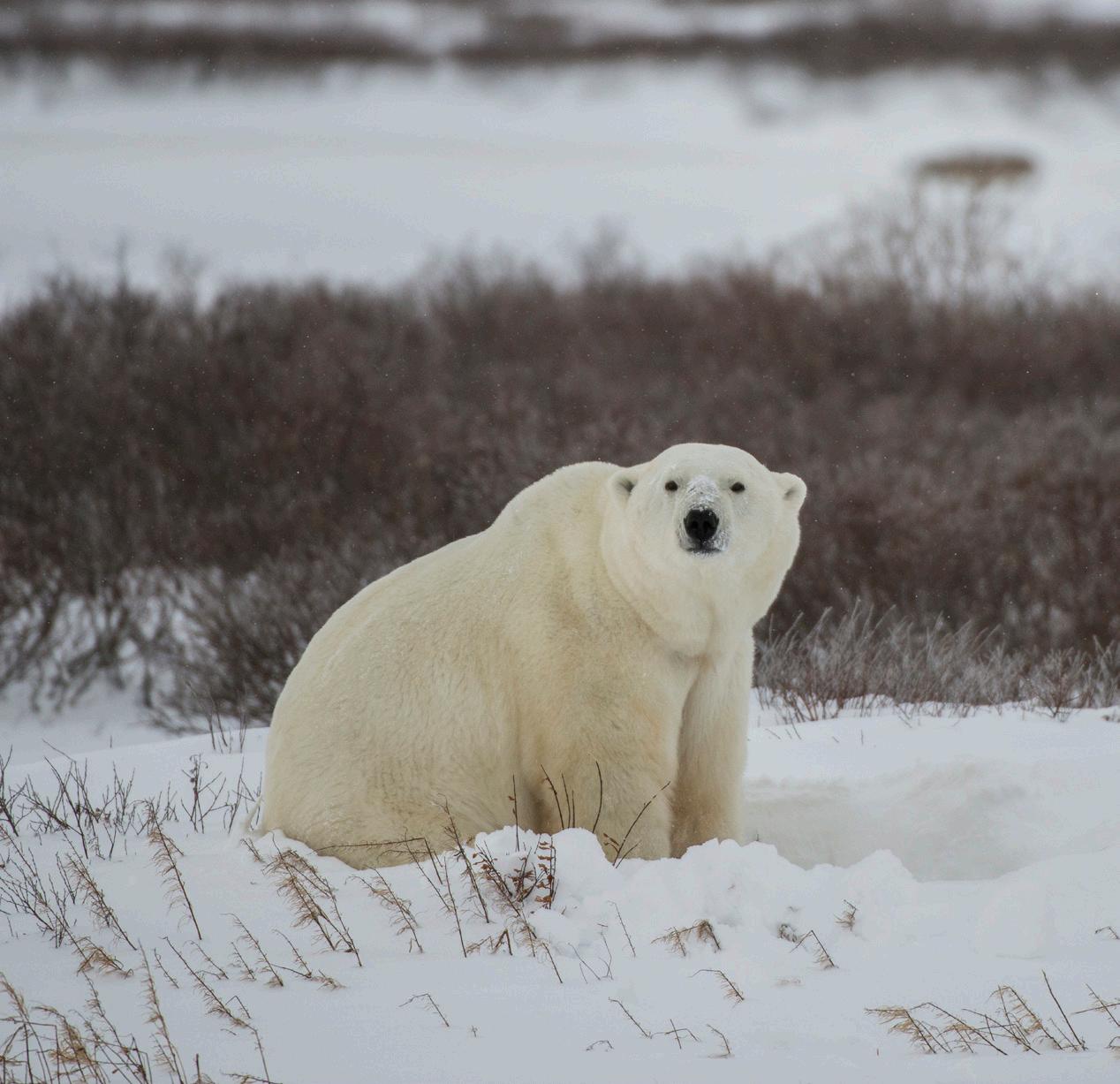
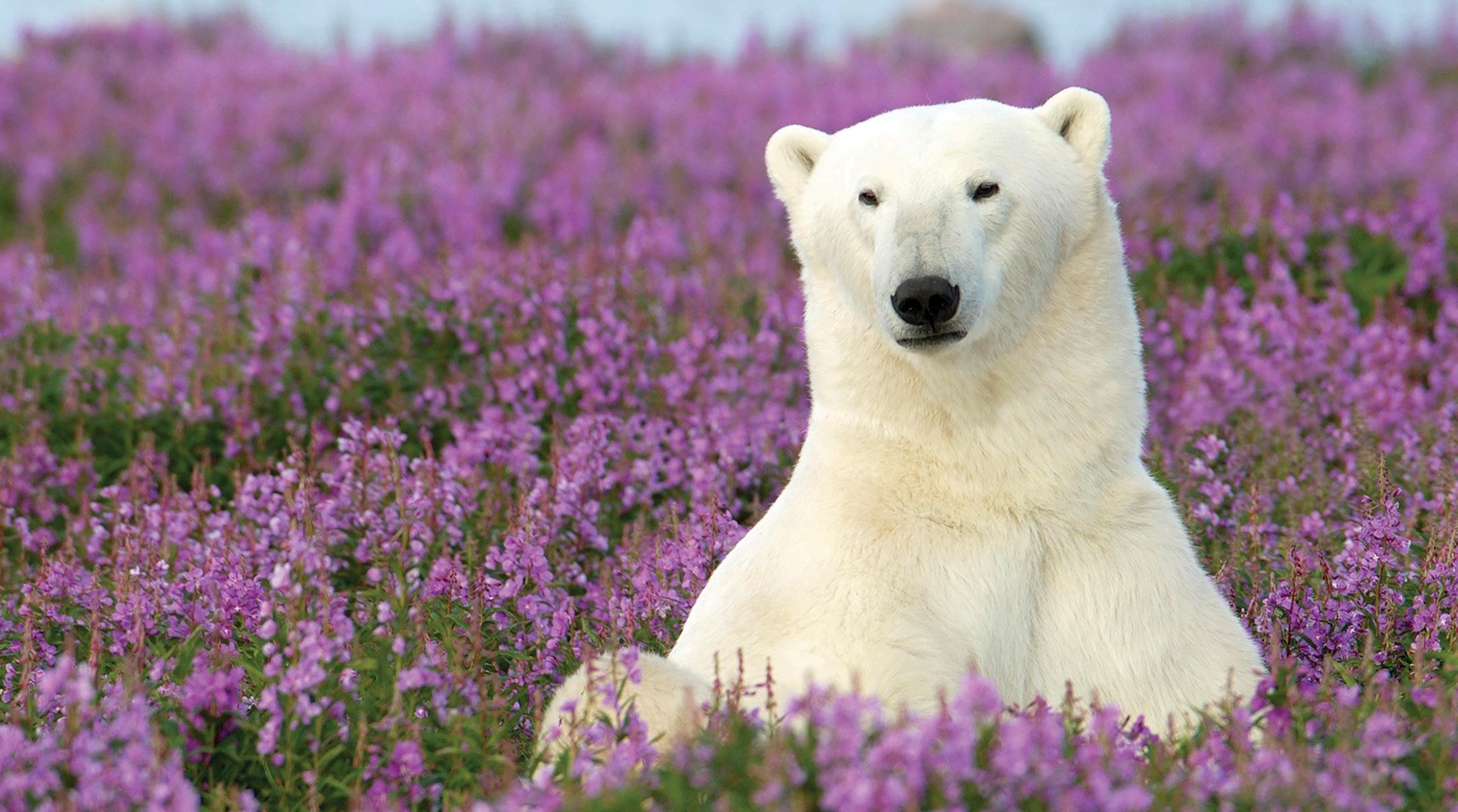
The western Hudson Bay is home to 58,000 beluga whales. Every summer in July and August, more than 5,000 of these friendly marine mammals come to the Churchill River and Seal River estuaries feed, mate and give birth to their young. Churchill’s visitors can watch the playful whales in different ways. On a boat tour, listen to the chirping of the belugas via hydrophone. Or get a little closer to the curious animals in a Zodiac. Jump in a kayak to observe the pod at water level. The whales swim around the kayaks – ready to share their friendly “beluga smile”!
Polar bears can also be spotted along the coast of Hudson Bay at this time. The bears spend the summer months leisurely lumbering around on land and cooling off in the refreshing water of the bay.
Located south of Churchill, Wapusk National Park is home to one of the most important polar bear denning areas in the world. In the summer months, up to 1,000 polar bears roam throughout the park.
Every fall, hundreds of polar bears migrate from their summer habitat on the tundra to the shores of Hudson Bay waiting for the bay to freeze. After the long summer months, the bears are eager to return to the ice to hunt for seals. In October and November, visitors from all over the world come to Churchill, “the polar bear capital of the world”, to witness the life-changing experience of viewing polar bears. Tucked safely inside a specially designed tundra vehicle, your heart will begin to beat faster when the world’s largest land predator slowly approaches. For a truly unique adventure, stay in a remote mobile lodge, or embark on a walking safari. At the end of an exciting day, you’ll be counting polar bears instead of sheep.
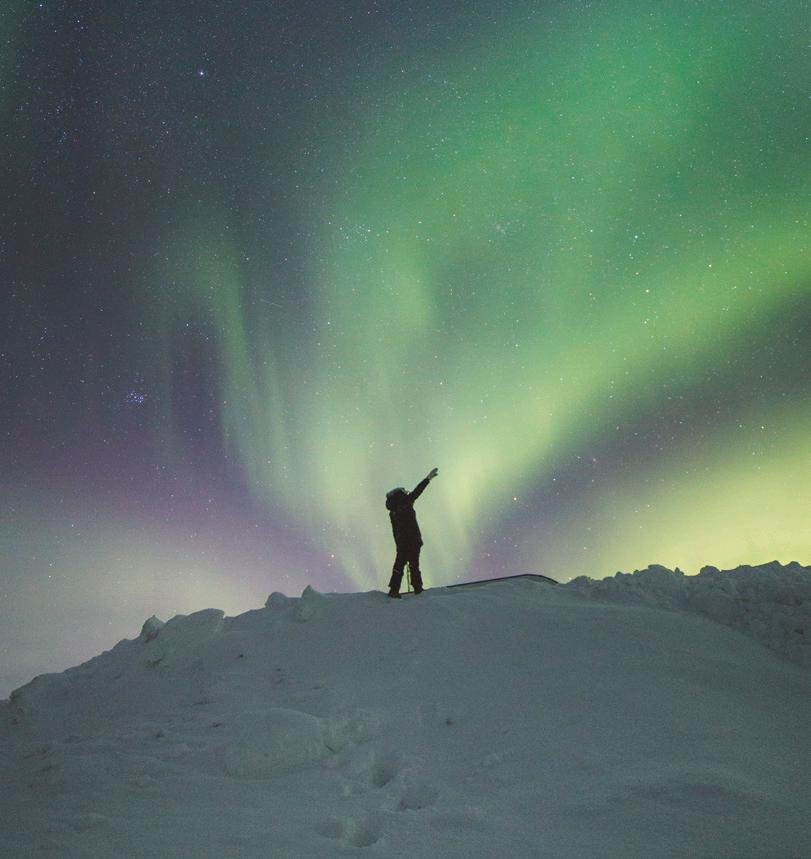
Start the year with a breathtaking lightshow in Churchill! In February and March, cold, clear and dark nights set the stage for the magical dance of the northern lights. Located under the Aurora Oval, Churchill is one of the best places in the world to view the northern lights, or aurora borealis. With the right conditions, the northern lights are visible in Churchill up to 300 nights of the year.
Manitoba is located in the heart of Canada. The geographical centre of Canada is located 29 km from Winnipeg.
SIZE
649, 940 km²
POPULATION
1.3 Million (780,000 in Winnipeg)
LANDSCAPES
Prairie, boreal plains, boreal shield, taiga shield, Tundra
LAKES & WATERWAYS
100,000 +
NATIONAL PARKS
2
Riding Mountain National Park Wapusk National Park
PROVINCIAL PARKS 92
TIMEZONE
Central Standard Time (CST)
CLIMATE
Continental climate, hot summers and cold winters
summer temperature: +26°C winter temperatures: -12°C
Provincial Name
The name Manitoba is derived from Cree or Ojibwe meaning “straight of the spirit” or from the Assiniboine language meaning “lake of the prairies”.
Language spoken
The official languages of Manitoba are English and French.
Getting there
Air Canada & WestJet are the two major Canadian airlines that service the Winnipeg James Richardson International Airport. Information can be found at www.aircanada.com or www.westjet.com. Another alternative mode of transportation, is by rail with VIA Rail Canada. www.viarail.com
Transportation in Winnipeg
You don’t usually need a rental car in Winnipeg. The city centre can be explored on foot or by bike. Public transport and taxis are available throughout the city.
Transportation outside of Winnipeg
For a round trip through Manitoba, a rental car or motorhome is best. Many locations are served by local bus companies.
Many northern cities can also be reached by air on scheduled flights with Calm Air (www.calmair.com) . VIA Rail services a selection of communities, including Churchill, by train (vairail.ca).
Visitor Centres
Visitor information centres around the province not only provide information, brochures and hotel tips, but often also offer exhibitions on the culture and history of the region. Travel Manitoba‘s flagship Visitor Information Centre is located in Winnipeg at The Forks National Historic Site.
Mobile Network
Network access is usually only available in populated regions. Most hotels and public facilities offer free WiFi.
Contact
TravelManitoba.com
Melanie Swenarchuk
Senior Business Development Manager
Phone: +1 (204) 927-7864 mswenarchuk@travelmanitoba.com
Michel LaRivière
International Marketing Specialist
Phone: +1 (204) 918-5402 mlariviere@travelmanitoba.com
Cindy Perrett
International Marketing Specialist
Phone +1 (204) 295-7006 cperrett@travelmanitoba.com